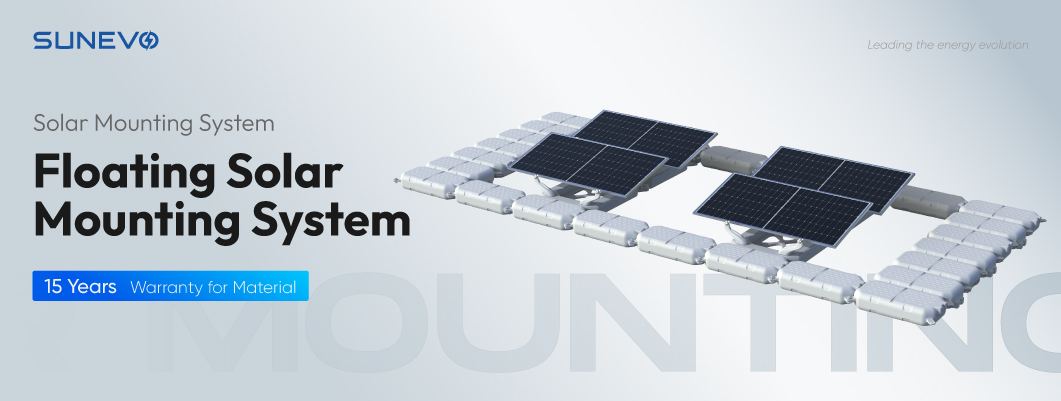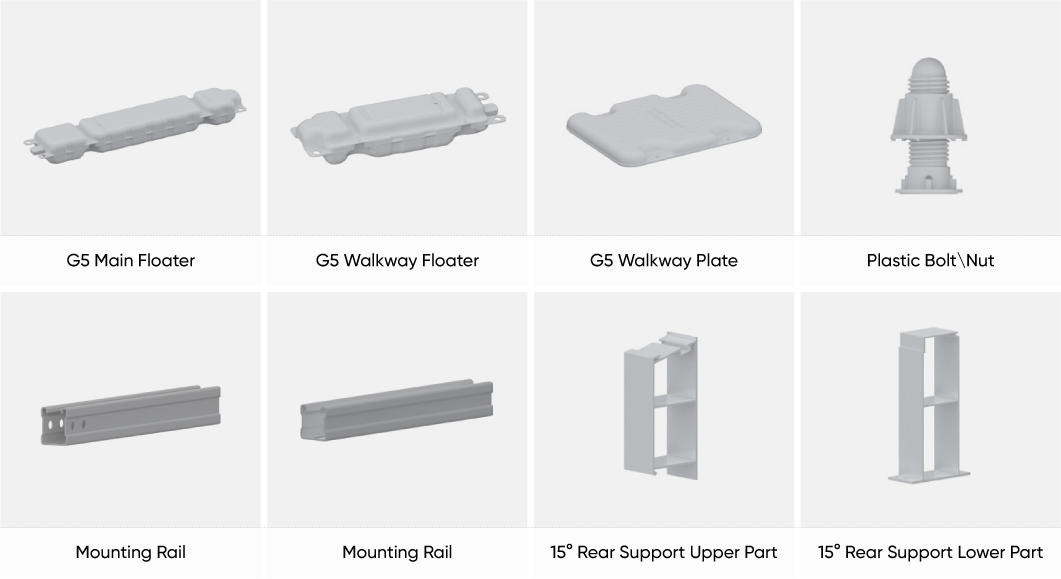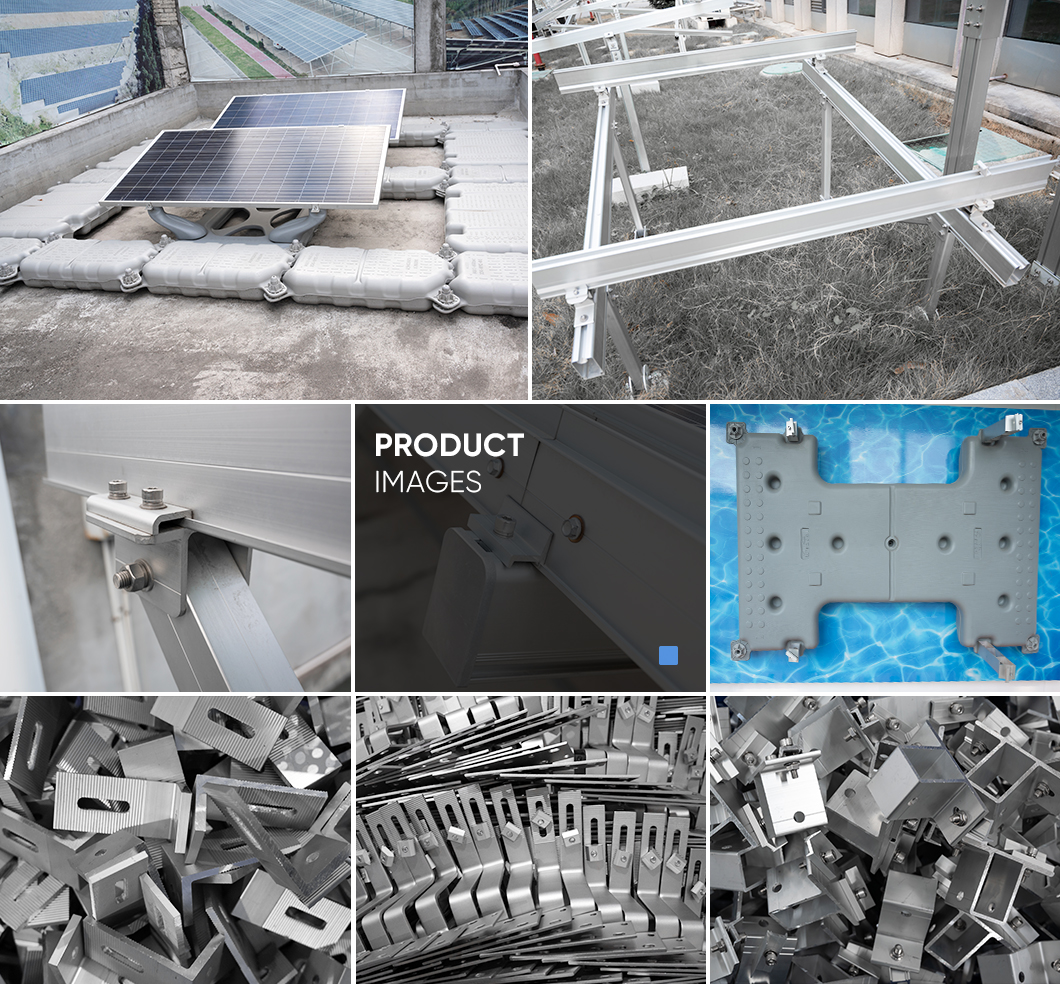Floating Solar Mounting System, also known as floating photovoltaic (PV) system, is a specialized mounting solution designed for installing solar panels on water bodies such as lakes, reservoirs, and ponds
Brand:
SunEvoInstallation Application:
Floating Solar Rack SystemPV Module Layout:
LandscapeWind Load:
42m/s or CustomizedSnow Load:
1.3KN/m2 or CustomizedInclination:
CustomizedSunEvo HPDE Solar Floating Energy Hook Structures Aluminum PV Mounting System
Solar floating rack systems provide an innovative and sustainable solution for harnessing solar energy in water environments, offering potential for increased renewable energy generation and optimizing land resources.

Technical Features of Floating Solar Mounting Systems:
| Product name | Floating Solar Mounting System |
| Installation Site |
Lake, Reservoir, Dam, Pond, Drinking Water area, Industrial West Pond etc. |
| Wind Load |
42m/s or Customized |
| Snow Load |
1.3KN/m2 or Customized |
| Applicable Solar Module |
Framed |
| Panel Layout |
Landscape |
| Material | HDPE, Zn-Al-Mg coating Steel, Aluminum alloy |

The system typically includes the following components:
--Floating Platforms: These are buoyant structures made of high-density polyethylene (HDPE) or other materials, capable of supporting the weight of solar panels and other equipment.
--Anchoring System: It consists of anchors, mooring lines, and connectors, which secure the floating platforms in place and prevent drifting or movement caused by wind and water currents.
--Solar Panel Mounts: Brackets or frames that are fixed onto the floating platforms and securely hold the solar panels in place. These mounts are designed to withstand various weather conditions and provide optimal tilt angles for maximizing energy production.

Installation of a floating solar system typically involves the following steps:
--Site Assessment: Conducting a thorough analysis of the water body, including depth, water quality, potential hazards, and available space for installation.
--Platform Layout: Determining the optimal configuration and layout of floating platforms to maximize energy production while considering factors like access paths and navigational requirements.
--Platform Assembly: Assembling the floating platforms by connecting individual modules or sections together according to the predetermined layout.
--Panel Installation: Mounting the solar panels onto the platforms using specialized brackets or frames, ensuring proper alignment and secure attachment.
--Electrical Connections: Connecting the solar panels in an array, as well as wiring them to the necessary electrical components such as inverters and combiner boxes.

Different Types Of Floating Solar Mounting Systems
Floating Solar Mounting Systems come in various types, including:
--Pontoon-Type: Consisting of individual pontoon modules that are interconnected to create a stable floating platform.
--Modular-Type: Assembled using modular components, allowing for flexible customization and scalability to fit different project sizes.
--Enclosed-Type: Using sealed chambers or buoyant elements to provide additional buoyancy and stability.

Suitable Installation Environments Of Floating Solar Mounting Systems
Solar floating rack systems are particularly suitable for installations in water-rich areas or areas with limited land availability.
They offer advantages such as reduced land usage, minimized evaporation from the water surface, and improved panel cooling, which can enhance the overall energy generation efficiency.
